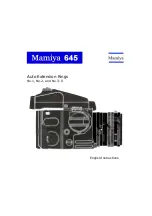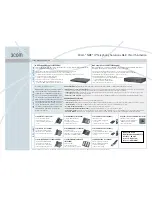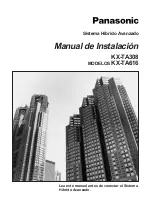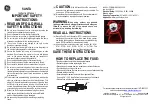
58
ASD-4
The factory-preset Phantom Ring Style is U.S. style #1 (the program entry
would be [5] [1] [*]).
Example: To change the Phantom Ring Style to type number [6], U.S. style
#2, enter the programming mode and press the following on your tone
phone:
[5] Change Phantom Ring Style to
[6] U.S. style #2
[*] End programming sequence (3 beeps indicate correct entry)
.
. (Optional entries for additional changes)
.
[*] Save changes and exit programming
5.4.12 F
UNCTION
[6]: A
UTOMATIC
TAD T
RANSFER
T
IMER
The Automatic TAD Transfer Timer function is a two-fold function that works
with feature number [3], Automatic TAD Transfer, and function number [8],
RMN (Remote Message Notification) Conditions.
When Automatic TAD Transfer (feature [3]) is turned ON, the ASD-4 uses
the Automatic TAD Transfer Timer to determine if a transfer should occur
when the TAD disconnects from the line. When a call is answered by the TAD
port, the Automatic TAD Transfer Timer starts counting down. When the
TAD port disconnects from a call, and the time on line was less than the value
of this timer, the ASD-4 automatically transfers the call to either the FAX or
MODEM port, depending on the setting of feature [1][2], Automatic
Transfer Port Selection. If the TAD port is on the telephone line longer than
the value of this timer, the ASD-4 hangs up instead of transferring the call
when the TAD port disconnects.
When you’ve activated all RMN features and functions, and “TAD” is one of
the RMN Conditions, the ASD-4 uses the Automatic TAD Transfer Timer to
determine whether a message was left on the TAD, and therefore whether
RMN should be triggered or the TAD included in the RMN “beep signal.” If
the TAD disconnects from the telephone line, and the time on line was less
than the value of this timer, the ASD-4 either will not trigger RMN or will not
include the TAD in its RMN “beep signal.” If the TAD is on line longer than
the timer value, the ASD-4 will trigger RMN and include the TAD in its RMN
“beep signal.”
Summary of Contents for ASD-4
Page 83: ...NOTES ...
















































